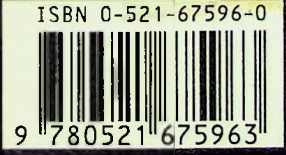In the ten years that have passed since the publication of the first edition of this textbook exciting advances have taken place in every discipline of geophysics. Computer-based improvements in technology have led the way, allowing more sophistication in the acquisition and processing of geophysical data. Advances in mass spectrometry have made it possible to analyze minute samples of matter in exquisite detail and have contributed to an improved understanding of the origin of our planet and the evolution of the solar system. Space research has led to better knowledge of the other planets in the solar system, and has revealed distant objects in orbit around the Sun. As a result, the definition of a planet has been changed. Satellite-based technology has provided more refined measurement of the gravity and magnetic fields of the Earth, and has enabled direct observation from space of minute surface changes related to volcanic and tectonic events. The structure, composition and dynamic behavior of the deep interior of the Earth have become better understood owing to refinements in seismic tomography. Fast computers and sophisticated algorithms have allowed scientists to construct plausible models of slow geodynamic behavior in the Earth’s mantle and core, and to elucidate the processes giving rise to the Earth’s magnetic field. The application of advanced computer analysis in high-resolution seismic reflection and ground-penetrating radar investigations has made it possible to describe subtle features of environmental interest in near-surface structures. Rock magnetic techniques applied to sediments have helped us to understand slow natural processes as well as more rapid anthropological changes that affect our environment, and to evaluate climates in the distant geological past. Climatic history in the more recent past can now be deduced from the analysis of temperature in boreholes.
5
Fundamentals of Geophysics
WILLIAM LOWRIE
Penerbit :
Cambridge University Press
Tahun :
2007
Buku Text
-
No Scan324
-
No Klasifikasi550
-
ISBN978-0-521-85902-8
-
ISSN
-
No Registrasi039A/VIII/2008
-
Lokasi Terbit
-
Jumlah Hal43
-
Label550 Low f
-
Versi DigitalTIDAK
-
Versi FisikTIDAK
-
Lokasi Rak Buku Fisik//
-
Jumlah Exemplar Fisik Tersedia-






